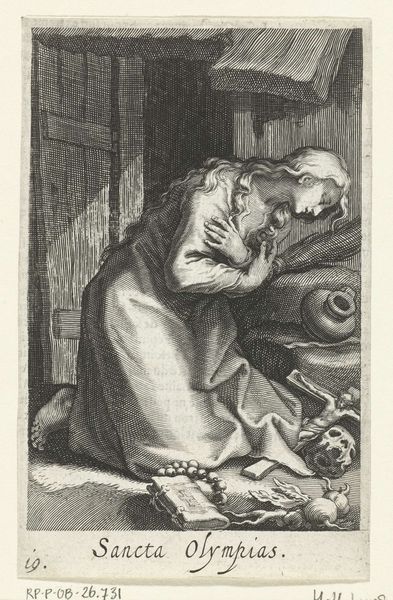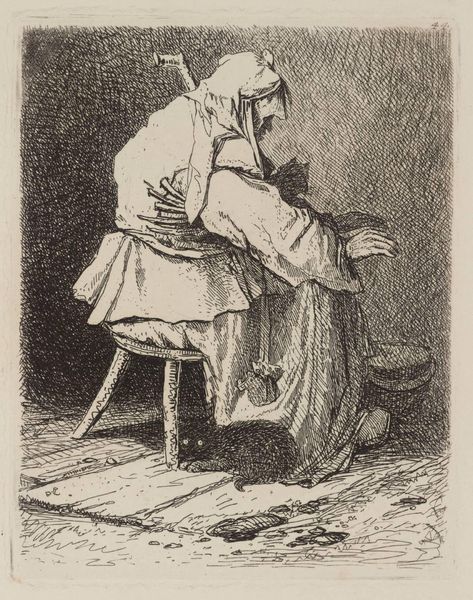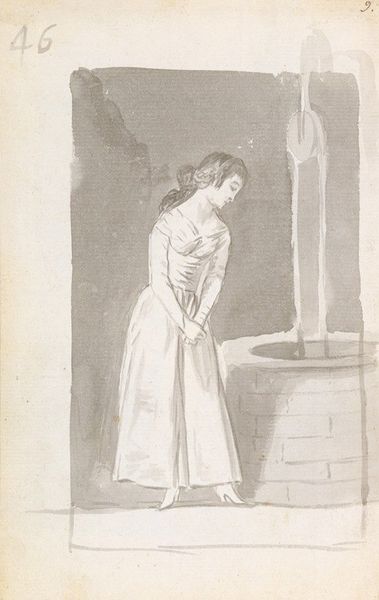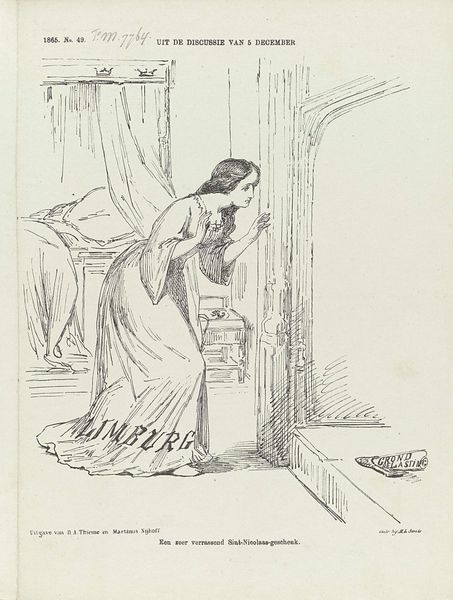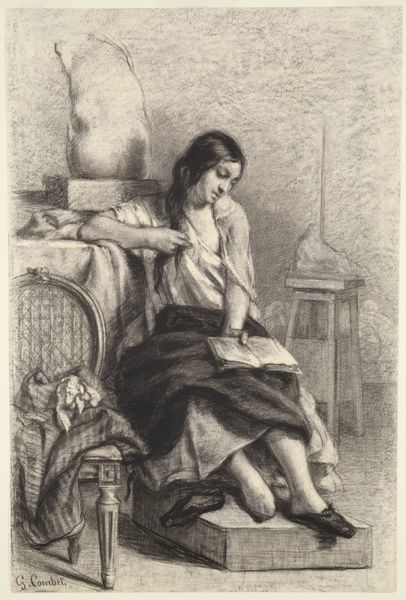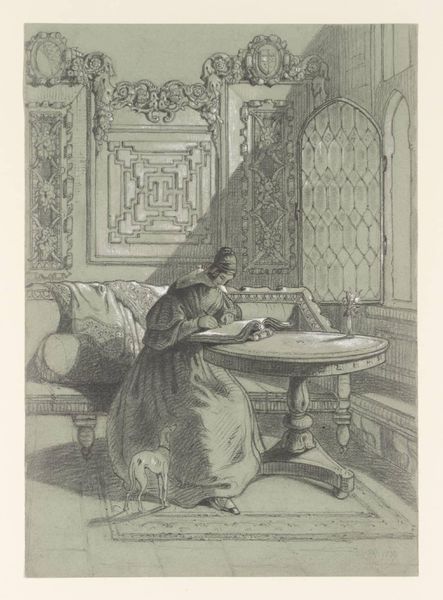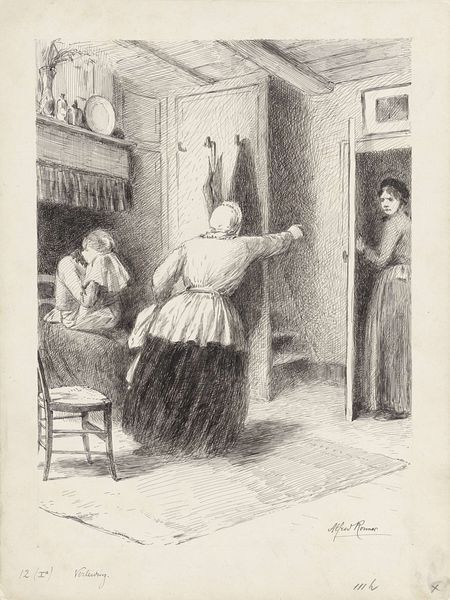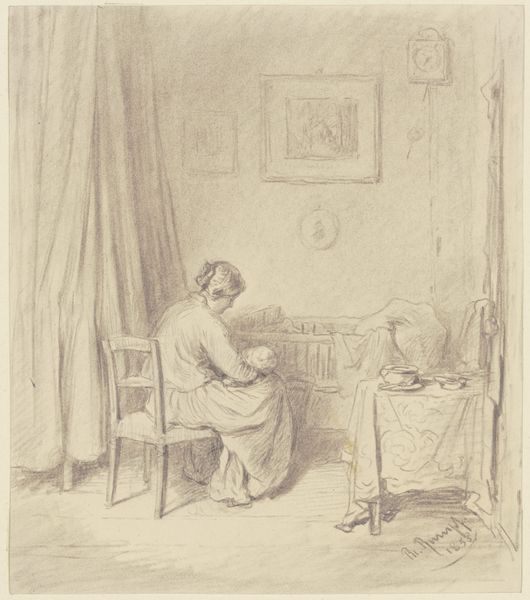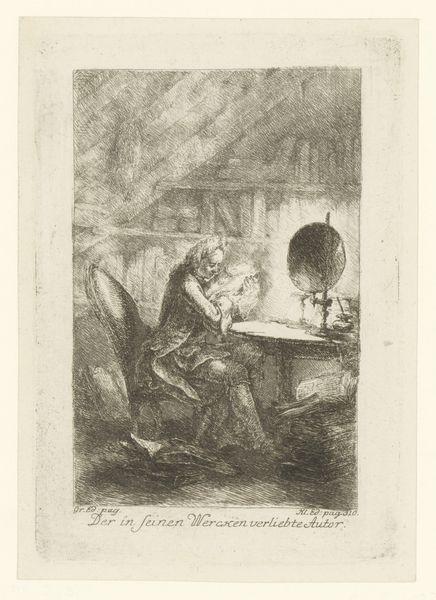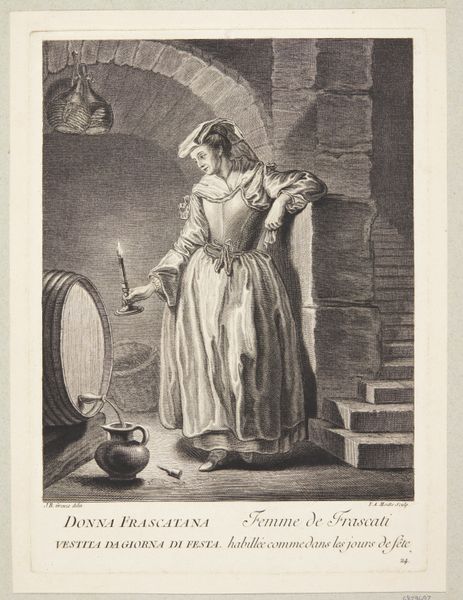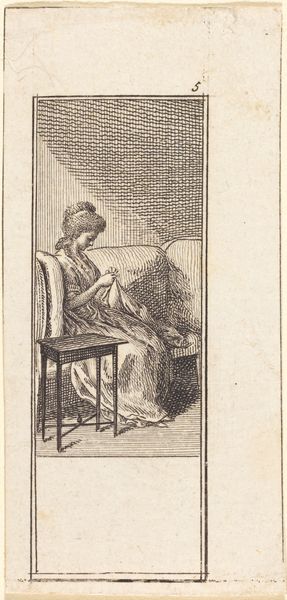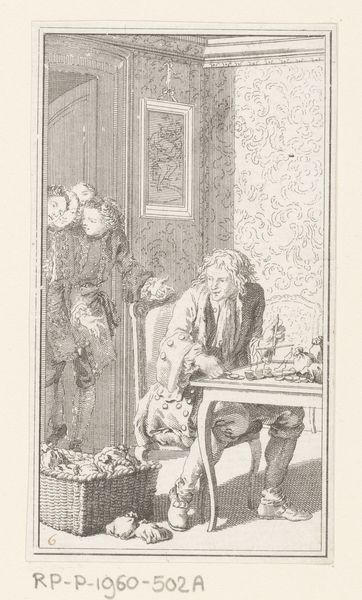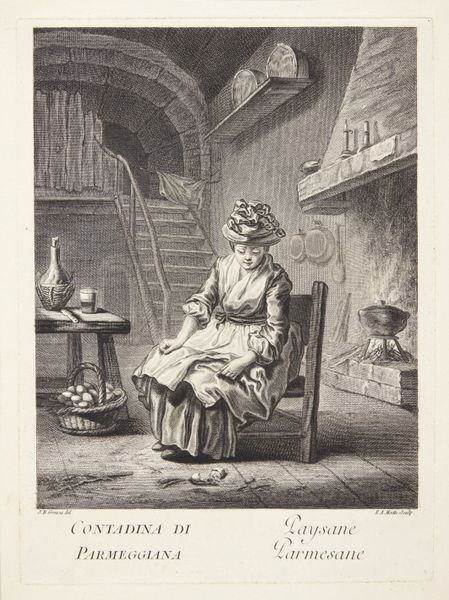
Spotprent op Thorbecke's weigering de kunsten aan te moedigen door aankoop van schilderijen, 1862 1862
0:00
0:00
drawing, print, pencil
#
drawing
#
narrative-art
# print
#
pencil sketch
#
old engraving style
#
pen-ink sketch
#
pencil
#
genre-painting
Dimensions: height 275 mm, width 215 mm
Copyright: Rijks Museum: Open Domain
Curator: This compelling print by Johan Michaël Schmidt Crans, created in 1862, is titled "Spotprent op Thorbecke's weigering de kunsten aan te moedigen door aankoop van schilderijen," which translates to "Cartoon on Thorbecke's refusal to encourage the arts through the purchase of paintings." Editor: My first impression is one of melancholic stillness. The grayscale palette contributes to the somber mood. The central figure’s posture exudes defeat. Curator: Indeed, observe how Schmidt Crans uses precise pencil strokes to delineate form, especially in the figure’s drapery and the architectural details of the fireplace. The artist skillfully utilizes light and shadow to create depth, drawing the viewer's eye towards the downcast woman. Note, too, the emphasis given by the stark contrast. Editor: Beyond its formal elements, the print speaks to the historical context of artistic patronage and the role of government support. We see "Cinderella," symbolizing art, relegated to the hearth, her labor trivialized next to a dismissive Dutch proverb claiming, "Art is not a matter for government." Curator: Fascinating! So the artist here uses symbolism, aligning the arts with this neglected, almost fairy-tale like, figure. Editor: Exactly! It highlights the precarious position of artists reliant on state funding and critiques Thorbecke’s policies for devaluing their contributions to society. The abandoned broomsticks suggest a disruption to her means, a quiet rebellion within the domestic sphere. Curator: Interesting! Even the empty hearth evokes the lack of warmth, or perhaps recognition. Editor: Art can ignite the culture as fuel ignites a fire. Curator: Ultimately, through the print's composition and textures, it emphasizes a political debate. The linear and balanced architecture almost holds our sorrowful character captive. Editor: I think we also see that the artist urges viewers to consider the broader social ramifications of their leaders’ decisions on the arts community. In doing so, Crans turns what might seem like a localized commentary into a larger debate about the cultural soul of a nation.
Comments
No comments
Be the first to comment and join the conversation on the ultimate creative platform.

